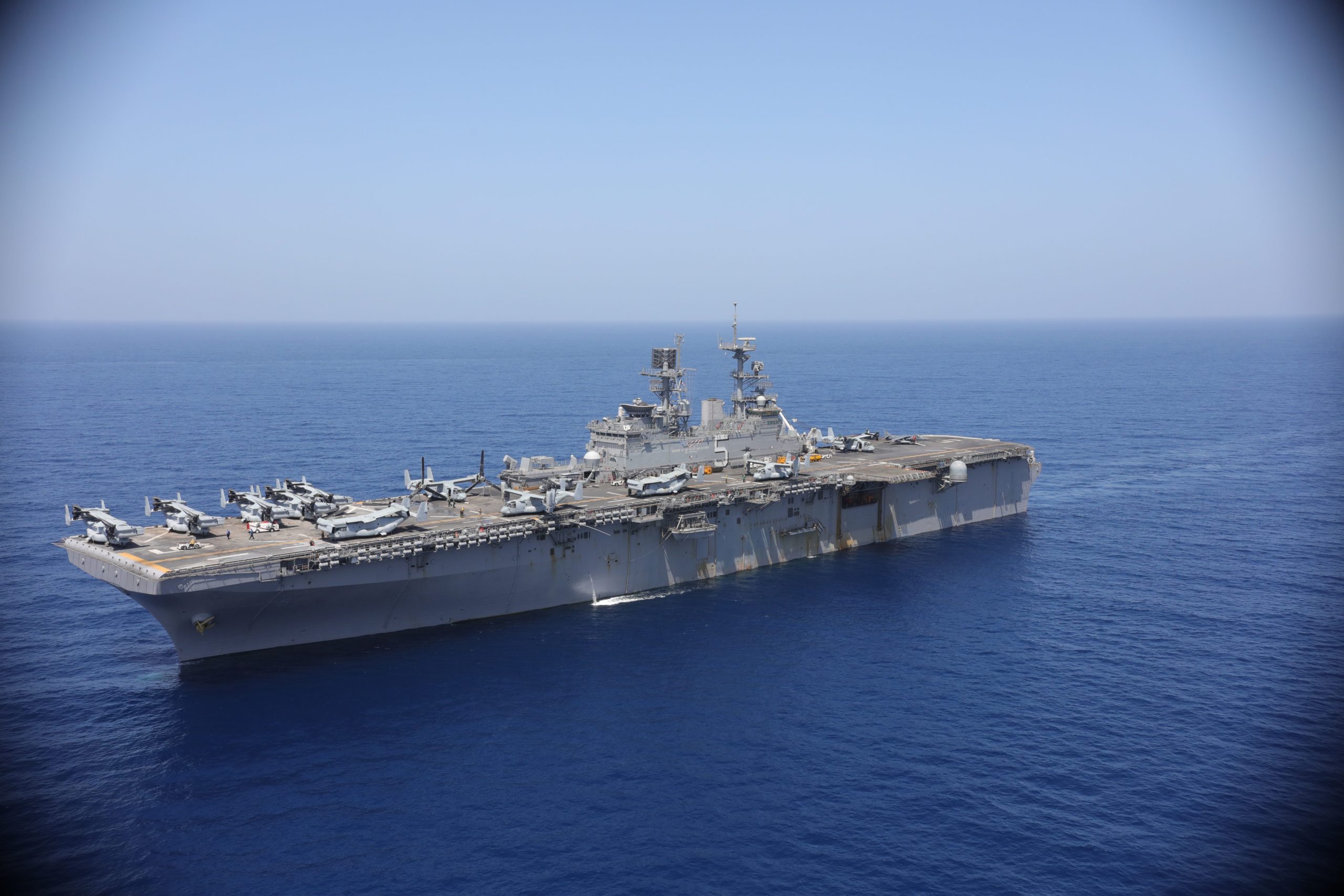Re-Thinking the Amphibious Fleet: The Challenge
There is a major problem with regard to the numbers and availability of the amphibious or expeditionary sea basing fleet.
Not only have the numbers gone done, but readiness levels are a problem, and there is deliberately created uncertainty about the future mix of this force.
In a 2021 Breaking Defense article, Mark Cancian characterized the situation facing the amphibious fleet as follows:
For decades, the requirement for amphibious ships had been stable at 38. The calculation was straightforward. Wartime plans required two Marine expeditionary brigades to conduct an amphibious operation. Each amphibious brigade needed 17 amphibious ships for embarkation (assault echelons only―follow-on echelons went in commercial shipping.) At any time, about 10% of the fleet is unavailable because of long-term maintenance.
Therefore, the full requirement for amphibious ships was 2 x 17 = 34 x 1.1 = 37.4 ≈ 38. The Marine Corps and amphibious advocates accepted a “resource constrained” level of 33/34 ships, though the Trump administration’s “355 ship fleet” had the full 38 amphibious ship goal. The mix of amphibious ships comprised LHDs/LHAs with a large flight deck, LPDs with a mix of aviation, cargo, troop, and landing craft capacity, and LSDs with a large well deck and cargo capacity. All these ships were large―25,000 tons to 41,000 tons (full load).
Then, in July 2019, newly installed Marine Commandant General Berger published his Commandant’s Planning Guidance, which shifted the focus of the Marine Corps towards an island campaign of small units and long-range fires in the Western Pacific. Large amphibious ships, being vulnerable and few, did not fit well with this new concept.
So, the guidance announced, “We will no longer use a ‘2.0 MEB requirement’ as the foundation for our arguments regarding amphibious shipbuilding…. We will no longer reference the 38-ship requirement…as the basis for force structure justifications.” The guidance expected that “the ongoing 2019 Force Structure Assessment will inform the amphibious requirements based upon this guidance,” but no new methodology for sizing the amphibious fleet has yet appeared. What did appear is a requirement for a light amphibious ship (LAW) that the commandant had called for in his guidance.
Navy and Marine Corps documents envisioned the LAW as a ship that could carry small groups of Marines around the islands of the Western Pacific for distributed operations against the Chinese. Because these forces would be small, a large ship was not needed. Because these operations would occur within an adversary’s “weapons engagement zone” (the Marine Corps’ name for the defensive bubble around the Chinese homeland, what others called an anti-access/area-denial zone), a small ship was easier to risk. Total LAW numbers were projected to be in the high 20s or low 30s.
The Navy is still working on the design of the LAW. Early concepts envisioned a ship with “minimum length 200 feet, crew of no more than 40 sailors, embarkation for least 75 Marines, minimum speed of 14 knots…11 day missions” This would make them about the size of a World War II landing craft infantry (LCI), much smaller than the De Soto County-class tank landing ship (LSTs) of the 1960s to 1990s and even smaller than World War II LSTs.
Whatever configuration the Navy settles on, the ship will be too small and uncomfortable for extended global deployments. Instead, LAWs will move small Marine units from one regional location to another, for example, from Okinawa to a wartime location in the South China Sea.
Currently, construction of new amphibious ships is on a “strategic pause.”
But frankly, I think the discussion of amphibious ships has not taken account of the impact of the aviation element which projects from these ships, including the coming of the CH-53K, nor of the mothership impact of USVs and UUVs on these ships as well.
And the re-consideration of what amphibious ships bring to the distributed force is needed to understand how significant they are.
Rather than shipping pink bodies around islands close to Chinese forces, amphibious ships with their aviation and newly arriving USV, UUV and UAV capabilities can project power into those areas of interest with reduced risk to Marine personnel.
In this series, I am going to look at the re-imaging of the amphibious fleet associated with the creation of a maritime kill web. We need to consider the impact of the aviation element in moving capabilities needed across a distributed combat chessboard. And we need to focus on how the coming of maritime autonomous systems can suggest a new ship class (motherships) and the opportunity to add mothership functionality to the extant fleet of amphibious ships.
All of this argues for a buildup of this fleet and not a drawdown and the building of a new generation of small amphibious ships to “fill the gap.”
Featured Photo: Flight operations take place on the flight deck of the amphibious assault ship USS Bataan (LHD 5), seen from an MH-60S Seahawk helicopter assigned to the Chargers of Helicopter Sea Combat Squadron (HSC) 26. (U.S. Navy photo by Mass Communication Specialist 3rd Class Raymond Minami/Released). April 11, 2017.

